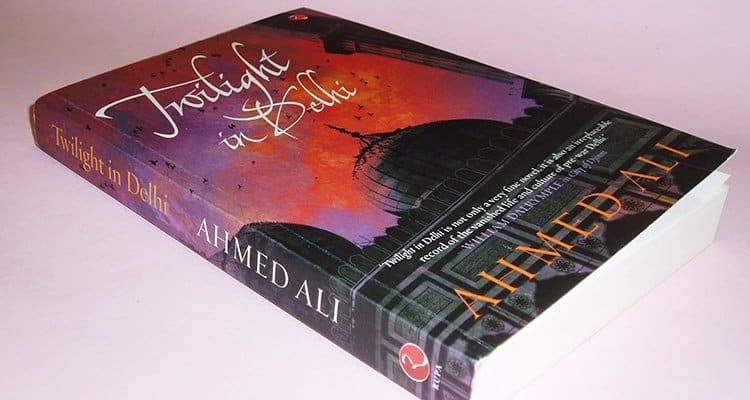The classic novel, set in Delhi of 1911-1919 with the backdrop of colonial rule and Indian independence struggle, chronicles the rapidly changing socio-political happenings through the eyes of Mir Nihal, his family, and the denizens of beloved old Delhi.
Like a lot of people I got to hear about Twilight in Delhi through City of Djinns by William Dalrymple. In William Dalrymple’s own words ‘Twilight in Delhi is not only a very fine novel; it is also an irreplaceable record of the vanished life and culture of pre-war Delhi.” After reading the 275 pages of this 1940 classic, which was originally published in Britain on the behest of E. M. Forester and Virginia Woolf, I can second every single world said in its praise.
Writer Ahmed Ali has succeeded in bringing the Delhi of the early twentieth-century alive. The story revolves around Mir Nihal, his family, and other inhabitants of the city. The story-telling is so vivid that one can actually feel, smell and sense the activities that are being described. One could hear the cries of fakirs and pigeon fliers, the buzz of Chandni Chowk, the renditions of poets, and smell the stink of sewers, the fragrance of jasmine and the medicated scent of hakims. The changing seasons of Delhi are illustrated so well that the stark oppressive heat, dampness of rainy July and chill of December could be eerily felt. The novel also encapsulates many historical moments, such as the coronation of the British King George V as the Emperor of India, the pillage of old city walls which was followed by the construction of Lutyens’ Delhi.
Even though there really is no plot to speak of, the story remains engaging. The characters are endearing and you will find yourself rooting for them at a crossway between their most joyful and most vulnerable moments. In one particular scene when Mir Nihal is left heartbroken after the death of his beloved pigeons, the sadness drips through the pages, but when he recovers from the loss one feels relieved.
What is most interesting is that the snippets of daily lives of characters give precious insights into the norms of that time. For instance, during a sandstorm, Begum Nihal tells her house help to place a broom under a leg of the cot as it was believed that doing this stops the sandstorms.
Another special feature is that couplets of Ghalib, Zauq, Zebun Nisa and Bahadur Shah Zafar are bestrewed liberally throughout. While the bland English translations rob the verses of their essence, the tone of the book remains very poetic. Sample this – “The night, with its awakening cold, was spreading her dark and star-bejeweled wings over the earth.”
For the love of poetry, family saga that delineates cruel restlessness of life, and Delhi – pick this book as your next read.
Image Credits: Andrew Amesbury
Niharika Dabral

